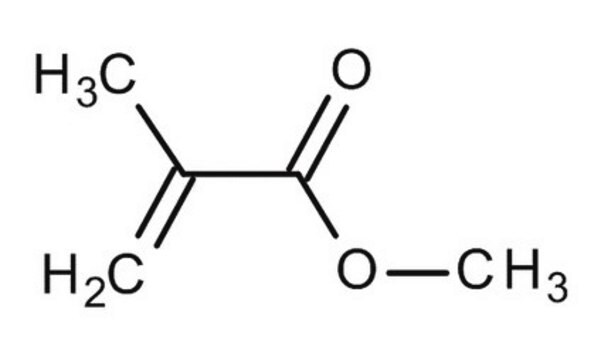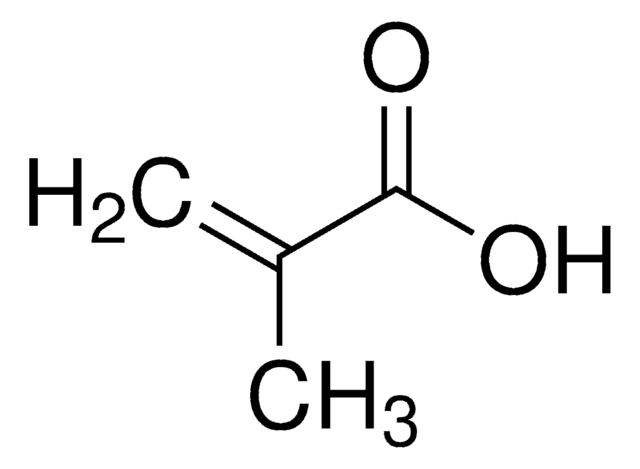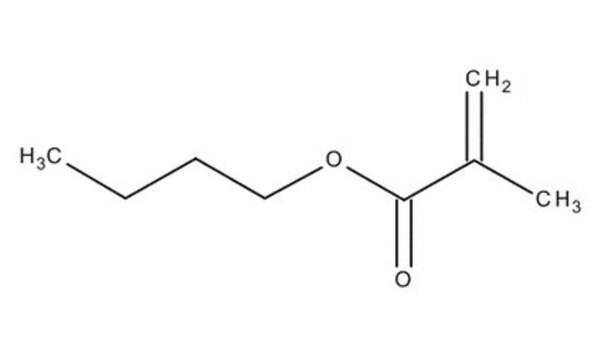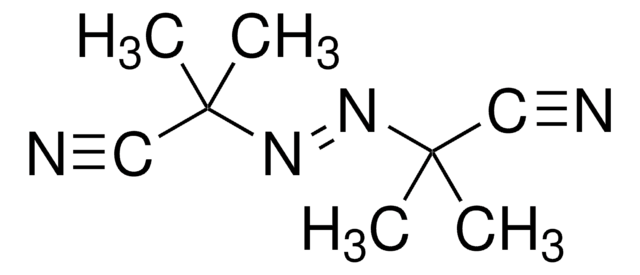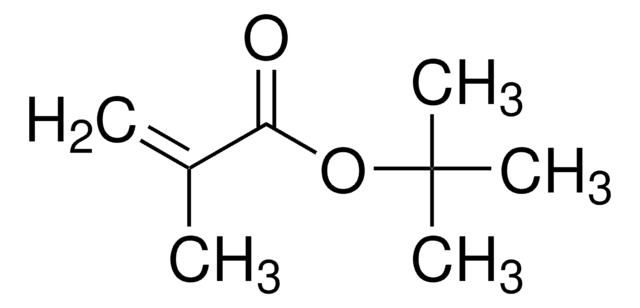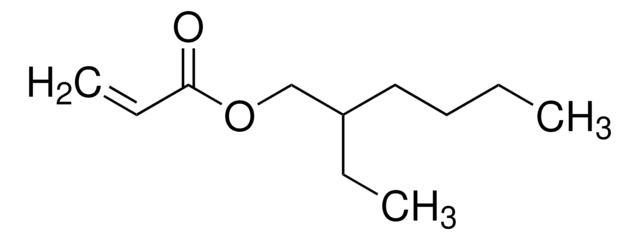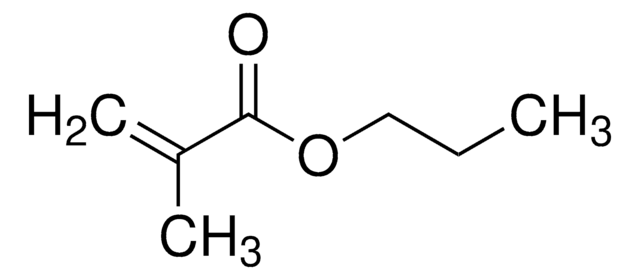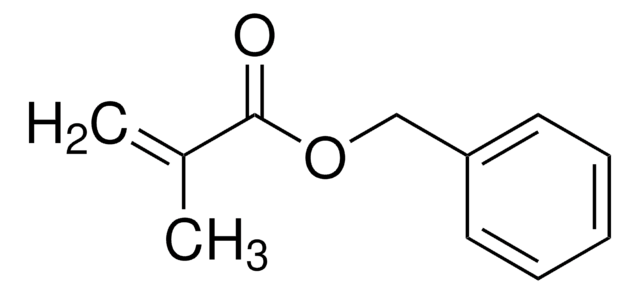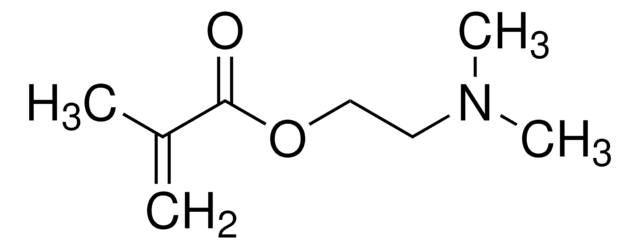235865
Butyl methacrylate
99%, contains monomethyl ether hydroquinone as inhibitor
About This Item
Prodotti consigliati
Densità del vapore
4.91 (15 °C, vs air)
Livello qualitativo
Tensione di vapore
2 mmHg ( 20 °C)
Saggio
99%
Stato
liquid
Temp. autoaccensione
562 °F
contiene
monomethyl ether hydroquinone as inhibitor
Limite di esplosione
2-8 %
Indice di rifrazione
n20/D 1.423 (lit.)
P. ebollizione
162-165 °C (lit.)
Densità
0.894 g/mL at 25 °C (lit.)
Temperatura di conservazione
2-8°C
Stringa SMILE
CCCCOC(=O)C(C)=C
InChI
1S/C8H14O2/c1-4-5-6-10-8(9)7(2)3/h2,4-6H2,1,3H3
SOGAXMICEFXMKE-UHFFFAOYSA-N
Cerchi prodotti simili? Visita Guida al confronto tra prodotti
Categorie correlate
Descrizione generale
Applicazioni
- A Monomer to synthesize waterborne butyl methacrylate (co)polymers latexes via emulsion polymerization for the development of coating materials for slow release-fertilizers.
- A matrix polymer in the preparation of LDH/poly (butyl methacrylate) nanocomposites, which can improve the mechanical properties and thermal stability of the resulting nanocomposites.
- A monomer to synthesize styrene and butyl methacrylate copolymers for use in leather finishing. Increasing the BMA content of the copolymer increases the water resistance and decreases the water vapor permeability of the leather.
- A monomer for the preparation of monolithic columns on microfluidic chips. These columns can be used for a wide range of applications, such as the separation and analysis of complex mixtures of compounds, the preconcentration of samples, and the development of new microfluidic analytical devices.
Avvertenze
Warning
Indicazioni di pericolo
Consigli di prudenza
Classi di pericolo
Eye Irrit. 2 - Flam. Liq. 3 - Skin Irrit. 2 - Skin Sens. 1 - STOT SE 3
Organi bersaglio
Respiratory system
Codice della classe di stoccaggio
3 - Flammable liquids
Classe di pericolosità dell'acqua (WGK)
WGK 1
Punto d’infiammabilità (°F)
119.3 °F - closed cup
Punto d’infiammabilità (°C)
48.5 °C - closed cup
Dispositivi di protezione individuale
Eyeshields, Faceshields, Gloves, type ABEK (EN14387) respirator filter
Scegli una delle versioni più recenti:
Possiedi già questo prodotto?
I documenti relativi ai prodotti acquistati recentemente sono disponibili nell’Archivio dei documenti.
I clienti hanno visto anche
Articoli
Tissue engineering has become a key therapeutic tool in the treatment of damaged or diseased organs and tissues, such as blood vessels and urinary bladders.
Global Trade Item Number
| SKU | GTIN |
|---|---|
| 235865-100ML | 4061837399510 |
| 235865-18L | 4061837399527 |
| 235865-1L | 4061838785282 |
| 235865-5ML |
Il team dei nostri ricercatori vanta grande esperienza in tutte le aree della ricerca quali Life Science, scienza dei materiali, sintesi chimica, cromatografia, discipline analitiche, ecc..
Contatta l'Assistenza Tecnica.

